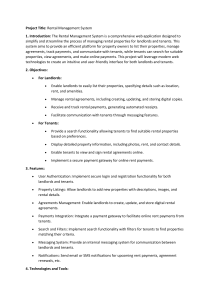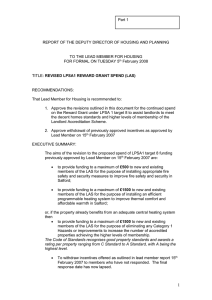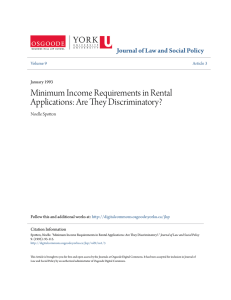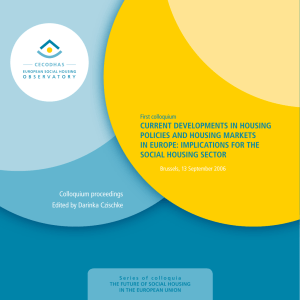Structure, Funding and Regulation of the Rental Market in Germany Peter Westerheide
advertisement
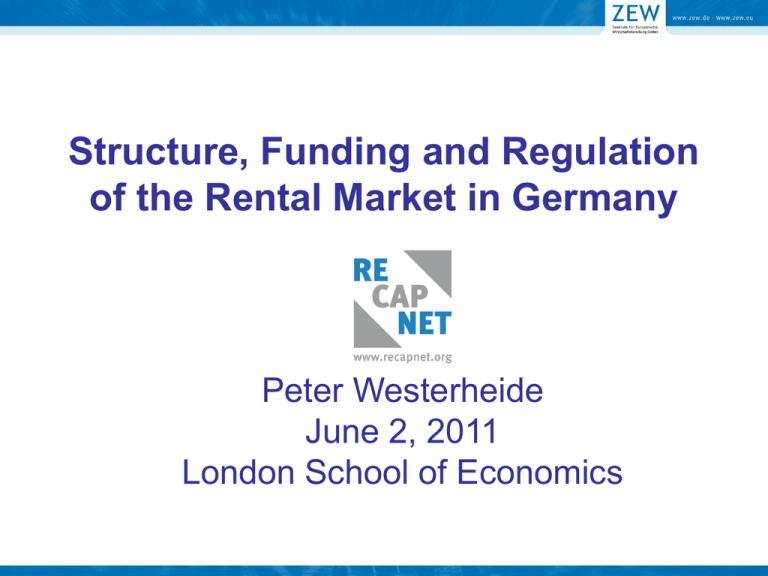
Structure, Funding and Regulation of the Rental Market in Germany Peter Westerheide June 2, 2011 London School of Economics Contents • Structure of the Rental Sector • Funding • Regulation • Why does work there and not here? 2 Structure of the Rental Sector • 61 per cent of the total rental sector (no. of flats) are owned by small private landlords Source: GdW 2008, University of Mannheim, Data refer to 2006 3 Structure of the Rental Sector • Social Structure of Landlords Differs Strongly from Average With rental income w./o. rental income Pregovernment income HH (Mean, Euro) 56k 28k Postgovernment income HH (Median, Euro) 48k 24k Age (Median, Years) 59 51 Source: GSOEP, Wave 2009, own calculations 4 Investment Motives of Private Landlords Source: BBR 2007, Data refer to West Germany Scale from 5 (very important) to 0 (totally unimportant) 5 Funding (I) • • No detailed figures on funding of purchases/construction Stylized facts: High equity ratios Inclusion of debt predominantly because interest is tax deductible against other sources of income Use of subsidies for energy saving measures and other subsidized investment purposes 6 Funding (II) • Financing Structure for Investments in the Building Stock Source: BBR 2007, Data refer to West Germany (Caution: small sample!) 7 Regulation (I) • • • Strong regulation towards high security of tenure Contracts are usually unlimited Landlord must prove legitimate interest to evict tenant breach of contractual obligations delay of payment own use by landlord (particularly hard to prove if landlord is owner occupier) 8 Regulation (II) • Strong regulation against prohibitive rent increases and rent levels increase to a level not higher than average level (of rents in new contracts from the last 4 years) increase by not more than 20 percent in 3 years not more than 11 percent of costs for energy saving measures may be passed to tenants per year usury laws: rent (even for new contracts) may not exceed local level by more than 50 percent. 9 Regulation: Why does it work there and not here? • Mentality of tenants Culture of renting instead/as an alternative of owning: Hard to understand how this developed, but renting is not stigmatised. Legacy of subsidised (social) housing after WW2: parents/grandparents living in rented flats is considered as normal Germany is not monocentric but has at least 5 big business centres (Berlin, Frankfurt, Munich, Duesseldorf, Hamburg) and a lot of smaller ones: Young professionals with partners tend to commute weekly from their workplace to their partners’ home (“remote distance partnerships”): supported by excellent infrastructure (in international comparison) 10 Regulation: Why does it work here and not there? • Mentality of landlords Long term investment motives dominate Residential investment as inflation hedge Retirement provision Security of tenure matches long term investment motives of landlord: Keep a good tenant as long as you can! 11 Probably a relict of good old „social market economy“... 12



